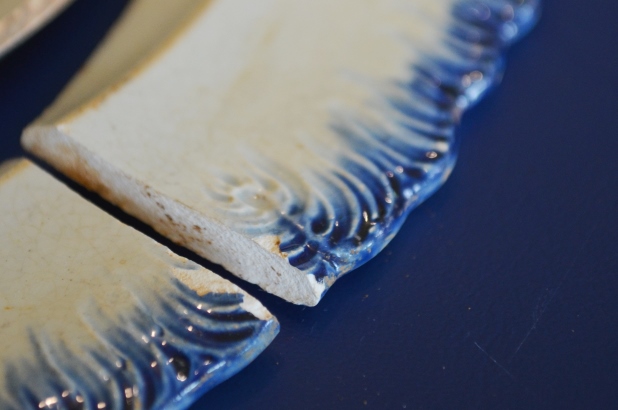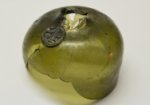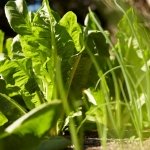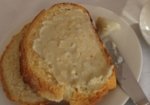At Rouse Hill House the stories of food and dining are told in oral histories, recipe books and manuscripts, stacks of plates and shelves of glassware – and in the site’s rich archaeological remains.This week we’re in the middle of a series of extensive works to upgrade services at the site, and ensure the preservation of the 1860s bath house, the cattle crush at the 1940s dairy, and the extensive fencing that criss-crosses the estate.
Installing pipes for irrigation and town water, and conduits for fiber-optic cabling may sound very straight forward, but at Rouse Hill it means careful and painstaking excavation to preserve the site’s rich archaeological heritage. Here the soil above a section of buried brick paving is being revealed so that a water pipe can be installed:
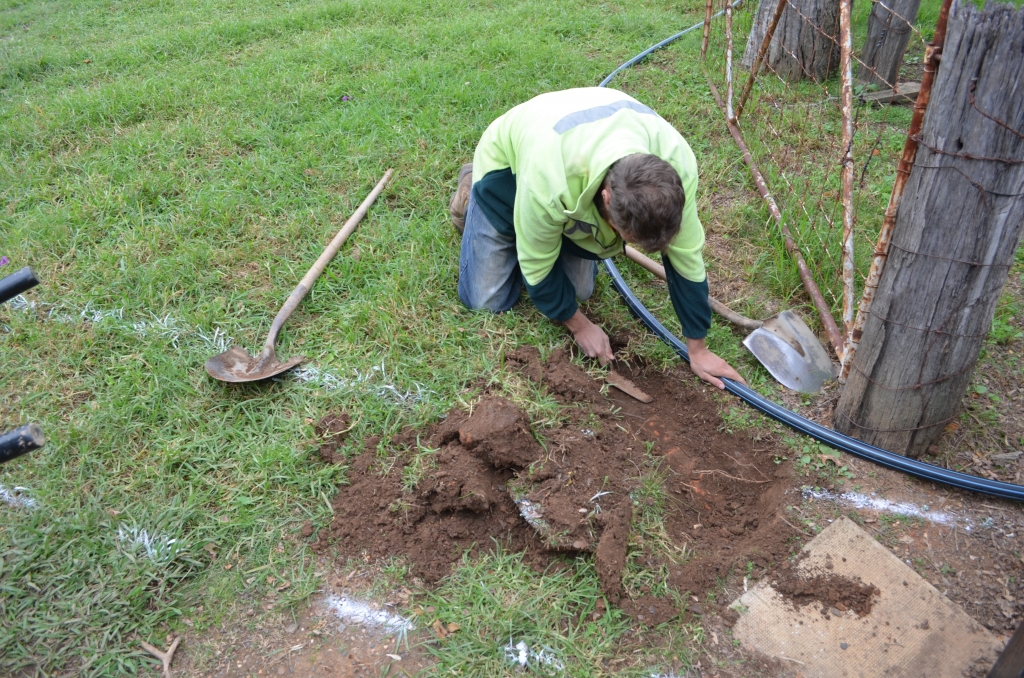
Careful hand digging is often required. Photo (c) Scott Hill for Sydney Living Museums
Our general policy at Rouse Hill is to leave archaeological remains in-situ, be they buried or exposed. If of particular significance, displaced during works, or if an artefact is exposed and likely to be damaged, then they are removed and stored.
More substantial remains than sherds are also revealed: work currently underway at the 1860s bath house has revealed drains that may predate that structure, and recently the drainage pit for the kitchen was found under a rose bed. Aside from building fragments – such as nails, bricks, corrugated iron and wire – a significant amount of material is connected with cooking and eating: glass or ceramic bottles, fragments of dinnerware, bones, and even the occasional piece of cutlery. We’ve discussed the archaeology of food several times – see a list below for quick links.
In 2016, during drainage works to protect the mid-19th century overseer’s house, remains were found clustered in distinct areas: behind the cottage were typically table ceramics and household items (including a silver thimble!), while to one side was a distinct area of broken glass bottles from early hand-blown to mold-pressed. One tiny but distinctive piece of red-rimmed dinnerware matches the large set inside the house (you can read about it here), telling us that at least some pieces from that large set were also used by Peggy and Gerald Terry when they lived in the cottage between before 1968.
In this photo fragments including a sad-iron (at left) and the top of a hand-blown bottle (at right) line the cottage’s kitchen window sill.
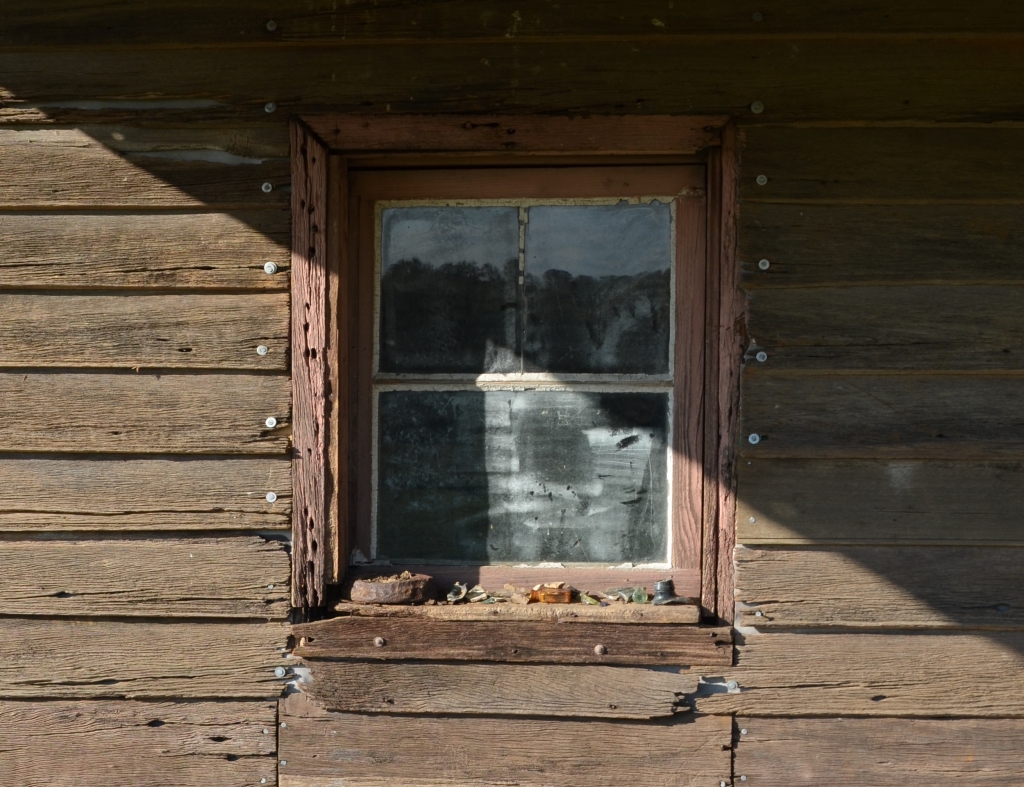
Fragments line a window sill at the overseer’s cottage. Photo (c) Scott Hill for Sydney Living Museums
Pieces resembling the ubiquitous blue and white ‘willow pattern’ abound, and occasionally we’re lucky enough to find one that bears the maker’s stamp, such as this piece of ‘Lozere’ pattern:
Fragment of Lozere pattern dinnerware; Edward Challinor, Staffordshire ware. Found by the Rouse Hill office during works in 2016. Photo (c) Sydney living Museums
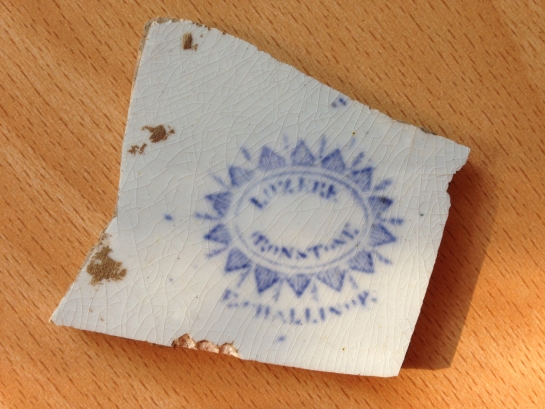
Fragment of Lozere pattern dinnerware with the stamp for Edward Challinor. Found by the Rouse Hill office during works in 2016. Photo (c) Sydney living Museums
Curiously, we often find fragments of dinnerware that don’t seem to relate to any other patterns in the collection, such as the pattern above – the thickness of the piece suggesting it is the center of a large platter or serving dish.
Another example was revealed yesterday, the fragments of a plate with a delicate feathered edge detail and a strip of deep blue majolica glaze. It was found at the bottom of a test trench being dug for a new irrigation pipe, close to the back of the house’s service wing. Oddly though it was completely by itself, apart from a few tiny pieces of charcoal. What was it doing a foot and a half down in this location, and buried rather than discarded on a rubbish heap that all farms have? Almost the entire plate was found, and after a careful wash it was arranged in its original shape:
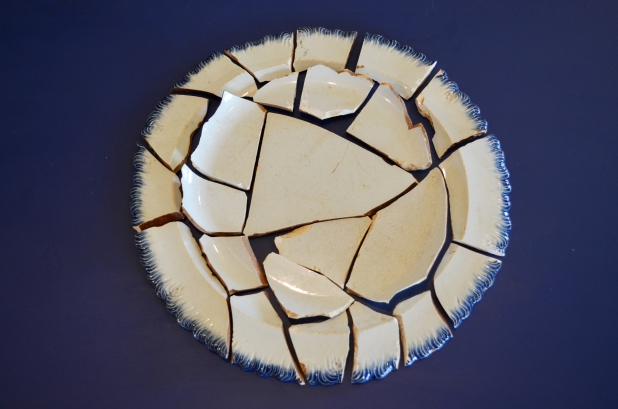
Reconstructed plate. Photo (c) Scott Hill for Sydney Living Museums
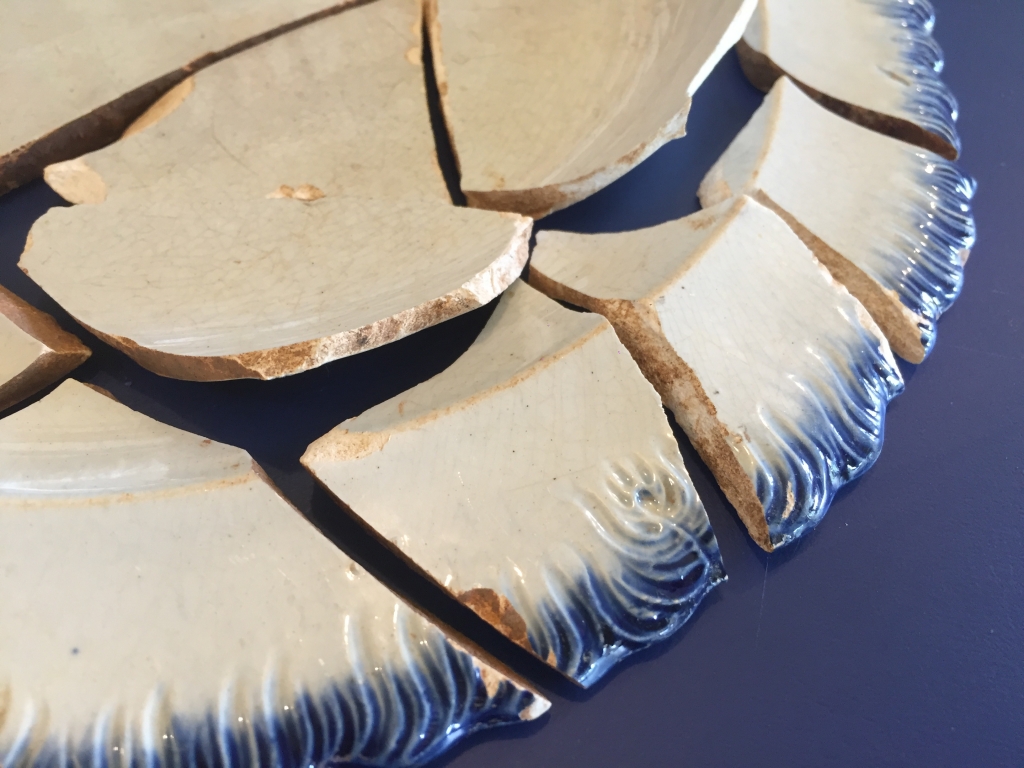
Detail of the plate’s decorative rim with deep blue glaze. Photo (c) Scott Hill for Sydney Living Museums
I think its an under-plate for a small serving dish or ‘cover’ – while coved it is far too shallow to be a soup plate. It doesn’t match any other plate or bowl at Rouse Hill today. There are frustratingly no makers marks or stamps; and the feathered-edge pattern is common in the latter 1700s and into the 1800s. It does look very similar to variations of the pattern dated to 1820, so that puts the dish in the earliest period of European settlement and it may well have been used by Richard and Elizabeth Rouse themselves.
More posts for the archaeologist in us all:
Reconstructing dinner in the Hyde Park Barracks destitute asylum
